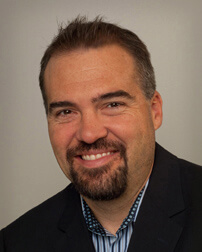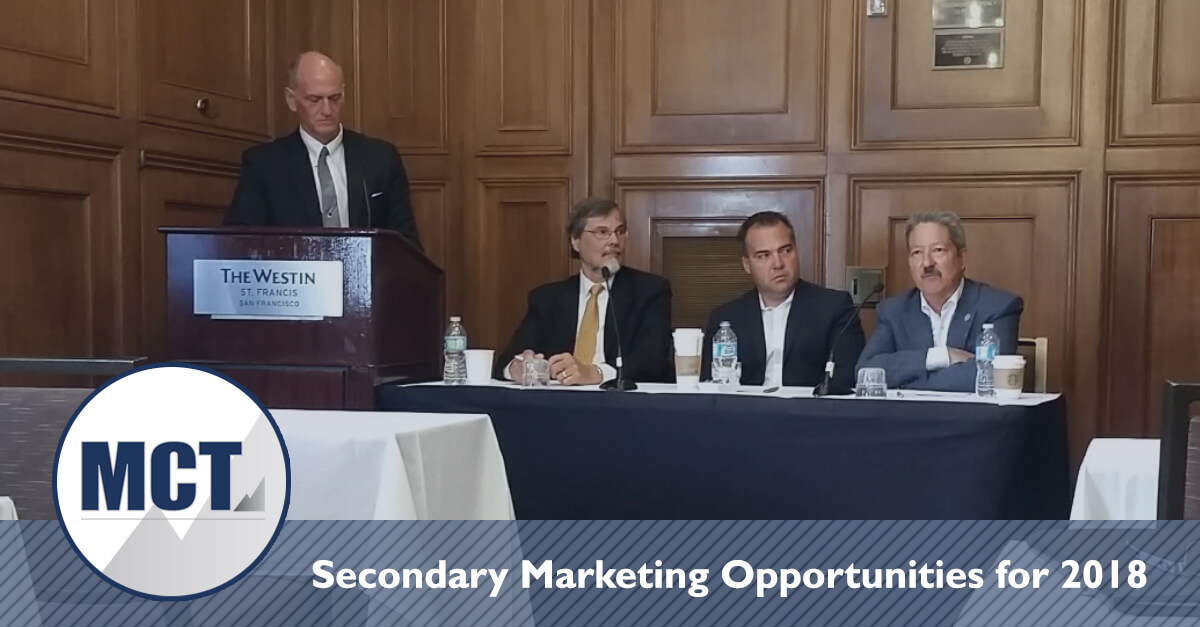
Phil Rasori – COO & Hedge Advisory Lead
This article is our recap of the second of two different panel sessions Phil Rasori participated in at the California Mortgage Bankers Association (CMBA) 45th Annual Western Secondary Market Conference in San Francisco, at the Westin St. Francis Hotel, July 19 – 21, 2017.
You may also be interested in our first CMBA panel session recap on Hedging Considerations for Secondary Market Trends at CMBA for information on increasing granularity in the pricing of the mortgage asset and challenges for derivative asset accounting.
About the Panel – Back by popular demand, Lloyd San and Bob Pathman, Co-Chairs of the California MBA Secondary Marketing Committee, chose Rob Chrisman as the moderator of this educational panel. The audience received expert perspective on the MSR market, lender pipeline selling strategies, and the panelists’ views for opportunities moving forward. Rob is very involved in the many issues we all want to know more about today and his dynamic yet witty attitude kept everyone engaged for this Friday morning panel session!

CMBA Panelists
- Bill Godfrey – EVP of Capital Markets at Mason-McDuffie Mortgage Corporation
- Phil Rasori – COO of Mortgage Capital Trading, Inc.
- Michael Lau – CEO of Pingora Asset Management
CMBA Panel Session with Phil Rasori – Secondary Marketing Opportunities for 2018 and Beyond!
The format of this educational session provided the audience with a good perspective for opportunities in 2017, 2018 and further into the future! The panel session was well attended with too many quality questions to note them all in this article. We’ve paraphrased eight questions from Mr. Chrisman as well as the panelists’ responses that provide a recap and give the perspective of each of the presenters.
Please enjoy this Q&A style recap and if you are interested in learning more feel free to contact us.
Q/A Table of Contents
- What is the state of the Ginnie market for MSRs and why did it go away?
- In terms of best execution, what should people know as far as Ginnie is concerned?
- Do you think that there are companies that don’t do a best execution analysis every day?
- Is the rule of thumb that you should have two investors for every product?
- What do you see for financing MSRs and is it available to most mortgage companies?
- How much do you communicate on details with your loan officers?
- Are MCT’s clients seeing all this minutia of policies and procedures ending up on the rate sheet?
- What do you see in the crystal ball for the future?
What is the state of the Ginnie market for MSRs and why did it go away?
Michael Lau – “It went away largely because we went away. Pingora was doing about a billion a month in Ginnie Mae flow, but the company that purchased Pingora was not interested in this any more so by the first quarter of this year Lakeview was pretty much the only purchaser left. Where Pingora would work with lenders that were doing $25MM+ per month, Lakeview was only interested in $100MM+ shops.”
In terms of best execution, what should people know as far as Ginnie is concerned?
Phil Rasori – “Ginnie MSRs have a negative duration, meaning they move in the opposite of the normal direction in relation to changes in interest rate. Pingora has a consistent servicing value offset put forth in the servicing value rate sheet. This transparency makes hedging for loans that are being executed on a co-issue basis very straightforward.”
Do you think that there are companies that don’t do a best execution analysis every day? Bill, how do you go through best ex every day?
Phil Rasori – “If you don’t do a robust best execution analysis, you’re falling behind. You need to hedge using TBAs in the marketplace, then once the loan has closed you’re ready to do best execution. Once a year you might see a best efforts best ex, but having a breadth of options such as bulk bid, rate sheet mandatory, AOT, MBS, and agency retained and release are what allow you to truly optimize loan sale profitability.”
Bill Godfrey – “Generally we see 15 to 20% of our business best ex as co-issue to the agencies. Based on our availability of capital and cost of funds we rarely retain servicing, but we do take a few every year.”
Is the rule of thumb that you should have two investors for every product?
Phil Rasori – “It’s definitely more than two investors. We say that everybody likes us in a new organization when we get started except the underwriters. From a relationship perspective you can’t have 30 investors, although we do have clients with 30 investors, but the average client seems to have 7-10. In 2012, Wells was making up 70% of purchasing of our client’s business, which was really scary. We obviously prefer more competition and liquidity in the market.”
We keep talking about financing, what do you see for financing MSRs and is it available to most mortgage companies?
Michael Lau – “After the crisis most companies pulled out of financing servicing. From 2010 onward, companies began to come back in and as an industry we began to generate the best book of business ever from a credit perspective. If you have a view that rates are going to go up, you want to buy the MSR market today, which appears to be the case for Penny and Wells. This has led to the most MSR financing available that we’ve seen since the financial crisis. Despite all the valuations, the MSR market is still fairly opaque and illiquid. This is a challenge for most mortgage companies.”
How much do you communicate on details with your loan officers?
Bill Godfrey – “Sharing and communicating with loan officers is very important. If you start doing the ‘because I told you so’ philosophy of management you’re going to be in a world of hurt. I start with a short answer but have a boilerplate for specific things such as roll downs when the market goes down. It is costly to change a lock, and it is called a lock because if rates go up or down it stays the same. I call this the “Lock Ness Monster” and have found that being open and honest with my LO’s is the best policy. Policies and procedures are changing all the time and I am open to suggestions. LO’s are on the front lines creating the risk, and you’ll learn things about your own risk position by speaking with them.”
Are MCT’s clients seeing all this minutia of policies and procedures ending up on the rate sheet?
Phil Rasori – “We’ve been talking about how Michael’s been very granular in the pricing of the servicing asset, but traditionally the spec payups in the TBA market were only available to the big securitizers, but now smaller companies are getting that in the cash window. For instance, Chase and Wells have a $175-200k traunch which Fannie and Freddie don’t have, so they obviously see some value in a payup for that group. So yes, we are seeing granularity come down to the rate sheet.”
What do you see in the crystal ball for the future?
Bill Godfrey – “Rates aren’t going to change much until the economy takes off. We have $10 trillion in securitized loans total and the Fed has $1.5 trillion of that. They said they will start with selling off $4 billion per month but eventually raise that up to $20 billion. This is going to create some volatility in the market. The stability of this market is not normal and we are going to get back to a normal volatility level which hasn’t been seen in the last 5 years. For a small to mid size company you really should look at availability of capital and liquidity.”
Michael Low – “Bill’s concerns are tempered by the Fed’s transparent communication about strategy and we shouldn’t expect the kind of volatility that we’ve seen at certain times in the past. We do need to remember that this is NOT normal; they didn’t have any of this on their balance sheet before the crisis. They’ve done this primarily to keep the 30 year fixed rate mortgage down, since real estate represents 20% of this economy.”
Learn more about secondary marketing and mortgage pipeline hedging:
- Hedging Note Rates Transcend Coupons (SME Article)
- Mortgage Servicing Rights Valuations & Software
- Professional Lock Desk Management Services
- Post Election Market Volatility by Phil Rasori
- Meet our Team of Experienced Capital Markets Professionals
About Phil Rasori
Mr. Rasori is a recognized thought-leader in capital markets operations within the mortgage banking community. His areas of expertise include complex financial modeling, computational dynamics, and linear programming for operational optimization. He developed the ground-breaking mortgage pipeline hedging algorithms that form the foundation of MCT’s HALO (Hedging and Loan-Sales Optimization) Program today. Mr. Rasori has functionally led MCT operations since 2005 and ascended to his current role as COO in 2007.







